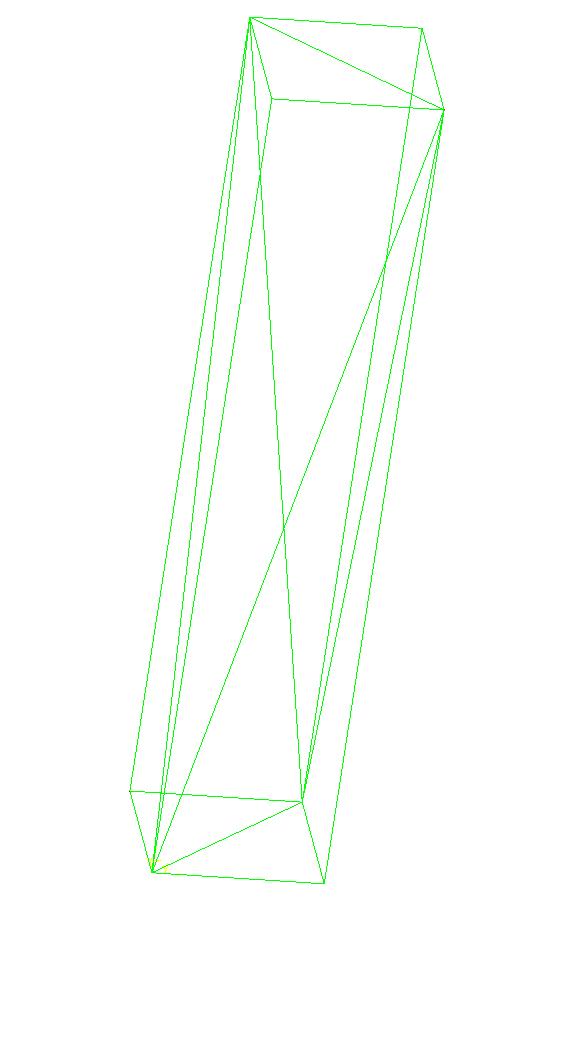5. D modeling#
This modeling is based on modeling A.
The type of element chosen for the mesh is the only difference between these two models.
5.1. Characteristics of the mesh#
We discretize the structure into 6 finite elements TETRA4
The interface is present within these 6 elements through the level sets.

Figure 5.1-a : Mesh
5.2. Boundary conditions#
The boundary conditions are those of modeling A: we embed the nodes on the lower face and we impose a displacement of the nodes on the upper face.
5.3. Analytical resolution#
The analytical solution is the one presented in modeling A [§ 2.3]: all the degrees of freedom following \(x\) and \(y\) are zero and all the degrees of freedom following \(z\) are equal to \(\mathrm{uz}/2\), where \(\mathrm{uz}={10}^{-6}\)
5.4. Tested sizes and results#
We test the values of the displacement just below and above the interface after convergence of the iterations of the operator STAT_NON_LINE. We check that we find the values determined in [§ 2.3].
Identification |
Reference |
Tolerance |
DX for all nodes just below the interface |
0.00 |
1.0E-16 |
DY for all nodes just below the interface |
0.00 |
1.0E-16 |
DZ for all nodes just below the interface |
0.00 |
1.0E-16 |
DX for all nodes just above the interface |
0.00 |
1.0E-16 |
DY for all nodes just above the interface |
0.00 |
1.0E-16 |
DZ for all nodes just above the interface |
1.0E-6 |
1.0E -9% |
To test all the nodes at once, we test the MINIMUM and the MAXIMUM of the column.
5.5. Comments#
We notice the discontinuity of the field of movement when crossing the interface, which is possible thanks to the enrichment of the elements with the Heaviside degree of freedom.